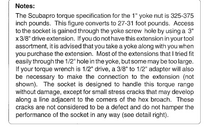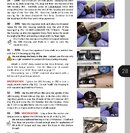I don't doubt that that is in the manual; but many changes / corrections have also been made to Poseidon specifications over the years.That's what is in the manual
Aren't Poseidon's like a completely different animal though? (I've never owned one, but have heard they're different).
In terms of real differences, you'd be surprised -- the Poseidon first stages, at least, aside from the MK3 (Xstream), are not that dissimilar from other makes; nothing too exotic; parts are all easily recognizable between brands; and ScubaPro, which has quite a presence on SB, had also called for similar, even higher torque settings, on some of their models, of 27-31 ft/lbs . . .





